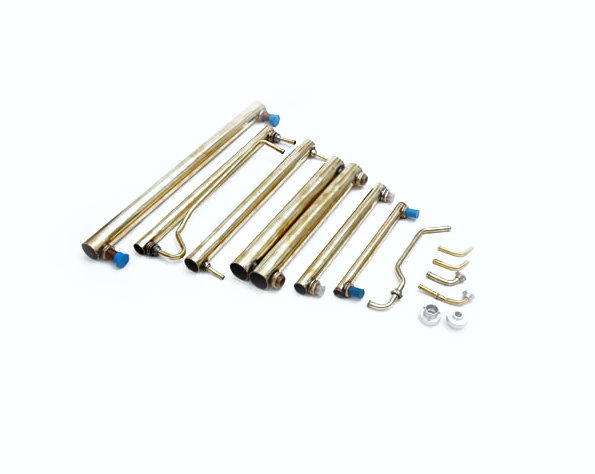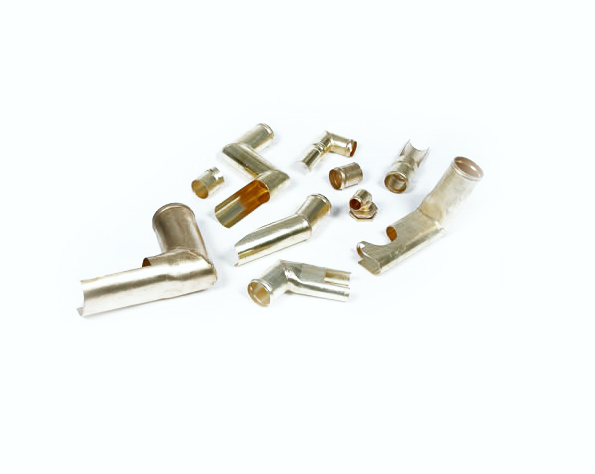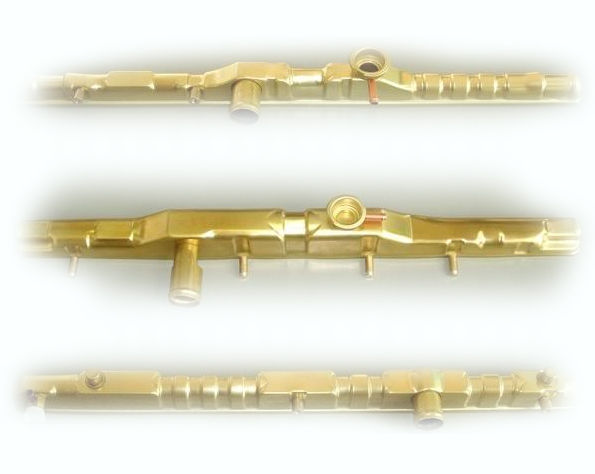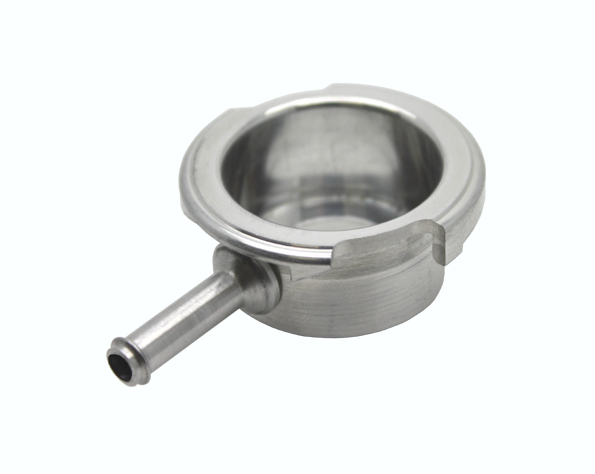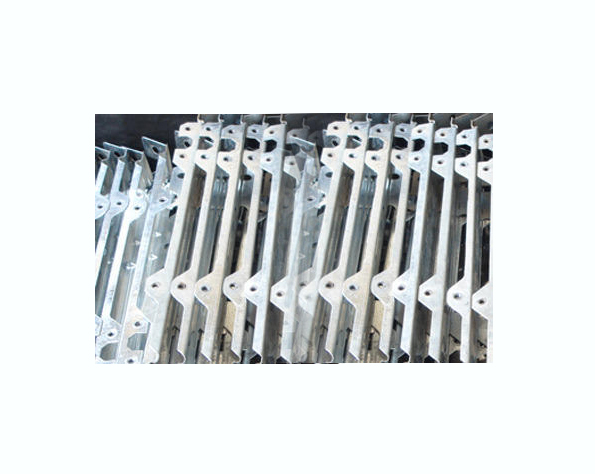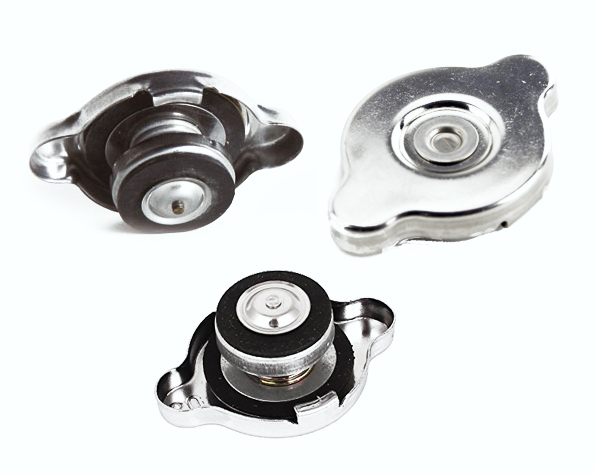
Radiator Pressure Cap
Radiator Pressure Cap
Sunraj Industries exports Radiator Pressure Caps of various sizes like Micro, Mini, Small and Medium of various pressures rating as per customer requirements.
Radiator Caps are pretty simple in appearance, but looks can be deceiving. Each part of the cap performs a special function:
Under the top of the cap is a spring disc diaphragm (and upper sealing gasket on closed system caps) that seals against the top of the radiator filler neck and provides friction to keep the cap from working loose.
The big spring is what maintains pressure on the coolant. The spring holds the pressure valve and lower sealing gasket against the base of the radiator filler neck to raise the coolant's boiling temperature and to keep it from escaping. When the pressure rating of the spring is exceeded, the pressure valve opens venting coolant into the overflow reservoir.
The lower sealing gasket is what keeps the coolant where it belongs. This gasket must be in excellent condition for the cap to seal tightly and do its job. If cracked, age-hardened or damaged, pressure and coolant can escape, allowing the engine to overheat.
A vacuum valve in the bottom of the cap allows coolant to be siphoned back into the radiator when the engine cools down. This keeps the radiator full, which helps prevent overheating and the formation of steam pockets. On many domestic passenger car applications with pressure vent-type caps, the vacuum valve also vents pressure when the cooling system is under light load. This allows the cooling system to operate at atmospheric pressure until the expansion of coolant and the creation of pressure in the system closes the valve.
| Pressure Cap |
Pressure |
Specification | Size |
| 13 PSI (0.9 Kg/cm2) 16 PSI (1.1 Kg/cm2) |
- | Micro Cap [For 41 mm dia Filler Neck] |
|
| 13 PSI (0.9 Kg/cm2) 16 PSI (1.1 Kg/cm2) 7 PSI (0.5 Kg/cm2)* |
SAE -J-164 (Reaffirmed FEB97) |
Mini Cap [For 43 mm dia. Filler Neck] |
|
| 7 PSI (0.5 Kg/cm2) 11 PSI (0.8 Kg/cm2) 13 PSI (0.9 Kg/cm2) 14.2 PSI (1.0 Kg/cm2) 16 PSI (1.1 Kg/cm2) |
SAE -J-164 (Reaffirmed FEB97) & IS - 12996 |
Small Cap [For 57 mm dia. Filler Neck] |
|
| 7 PSI (0.5 Kg/cm2)* | - | Medium Cap [For 68.5 mm dia. Filler Neck] |
Pressure Cap Testing Process:
![]() Main valve opening.
Main valve opening.
![]() Vacuum valve opening.
Vacuum valve opening.
![]() Top seal testing.
Top seal testing.
![]() Assembly fitting.
Assembly fitting.
![]() Spot welding strength.
Spot welding strength.
![]() Spring test.
Spring test.
a. Spring load test
b. Helical spring endurance test.
c. Vent valve spring endurance
d. Plant spring endurance test.
![]() 7. Torque test for assembly setting.
7. Torque test for assembly setting.
![]() 8. Open pressure difference test.
8. Open pressure difference test.
![]() 9. Pressure opening test.
9. Pressure opening test.
![]() 10. Valve disk riveting.
10. Valve disk riveting.
![]() 11. Salt spray test of cap cover.
11. Salt spray test of cap cover.
![]() 12. Chemical analysis.
12. Chemical analysis.
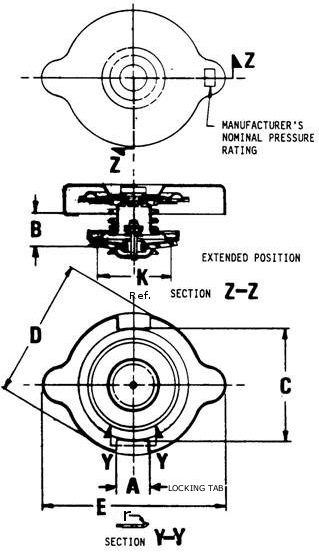
| Nominal Pressure Rating kPa |
Nominal Pressure Rating psi |
A mm |
B mm |
C mm |
D mm |
E Max mm |
| Mini | ||||||
| 83-110 |
12–16 |
10.70–11.70 |
11.20–12.00 |
39.2–40.0 |
43.43–43.80 |
66.0 |
| 97–124 | 14–18 | 10.70–11.70 | 11.20–12.00 | 39.2–40.0 | 43.43–43.80 | 66.0 |
| Small | ||||||
| 21–34 | 3–5 | 10.92–11.94 | 14.73–15.62 | 50.80–52.32 | 57.15–57.79 | 80.26 |
| 41–55 | 6–8 | 14.22–15.24 | 14.73–15.62 | 50.80–52.32 | 57.15–57.79 | 80.26 |
| 62–76 | 9–11 | 14.22–15.24 | 14.73–15.62 | 50.80–52.32 | 57.15–57.79 | 80.26 |
| 83–110 | 12-16 | 20.83–21.84 | 14.73–15.62 | 50.80–52.32 | 57.15–57.79 | 80.26 |
| 97–124 | 14-18 | 20.83–21.84 | 14.73–15.62 | 50.80–52.32 | 57.15–57.79 | 80.26 |
| Medium | ||||||
| 21–34 | 3–5 | 9.14–10.16 | 13.72–14.61 | 62.74–64.26 | 69.34–69.98 | 92.71 |
| 41–55 | 6–8 | 15.49–16.51 | 13.72–14.61 | 62.74–64.26 | 69.34–69.98 | 92.71 |
| 62–76 | 9–11 | 15.49–16.51 | 13.72–14.61 | 62.74–64.25 | 69.34–69.98 | 92.71 |
| 83–110 | 12–16 | 20.83–21.84 | 13.72–14.61 | 62.74–64.25 | 69.34–69.98 | 92.71 |
Related Products
